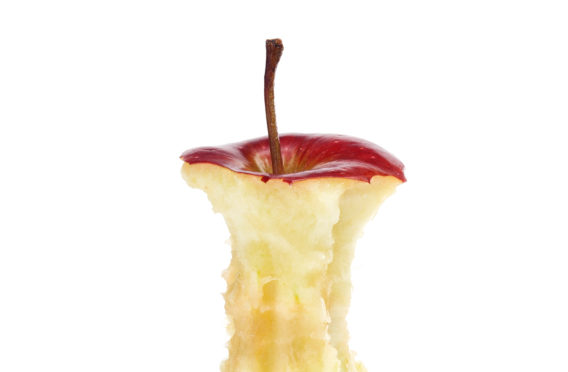
People throwing apple cores out of car windows are inadvertently threatening the future of native species, according to scientists.
Researchers studying the wild apple were surprised to find trees which has sprouted from supermarket varieties growing along the verges of the A9 and M9.
Amateur orchard growers also have an impact on the wild apple, sometimes known as crab apples, as their trees cross-pollinate with native ones to create hybrids.
Scientists carried out genetic testing of apple trees growing in the wild in Scotland and discovered that in some areas 50% are hybrids.
But now an orchard of 120 pure-bred wild apples – or malus sylvestris – is being created in a bid to help secure the future of the fruit.
The trees have been DNA tested to ensure their purity , and genetic screening programme will also be carried out next year at nurseries selling wild apple trees to establish how pure they are.
Experts have also urged people not to discard apple cores or to plant crab apple trees which might have no wild genes out in the countryside.
Dr Markus Ruhsam, a molecular biologist at the Royal Botanic Gardens Edinburgh who carried out a groundbreaking study on wild apples, said: “I wouldn’t want to discourage people from planting apple trees in their gardens.
“What I would like to discourage is people randomly planting apple trees in the wild. We want to keep wild apples wild. Another thing is not chucking your apple core out of the window. I’m guilty of it as well.
“But when I was looking for apple trees I suddenly realised how many there are growing along motorways and busy roads. These apple trees are starting to sprout across busy motorways, along the M9 and the A9. And they are all cultivated apples.”
Dr Ruhsam carried out a survey of the genetic make-up of apple trees growing in the wild in Scotland and discovered that half of those in the central belt are hybrids.
The southern Highlands and Dumfries and Galloway have higher percentages of pure wild apples – 85% and 75% respectively – as they are less populated.

Enjoy the convenience of having The Sunday Post delivered as a digital ePaper straight to your smartphone, tablet or computer.
Subscribe for only £5.49 a month and enjoy all the benefits of the printed paper as a digital replica.
Subscribe